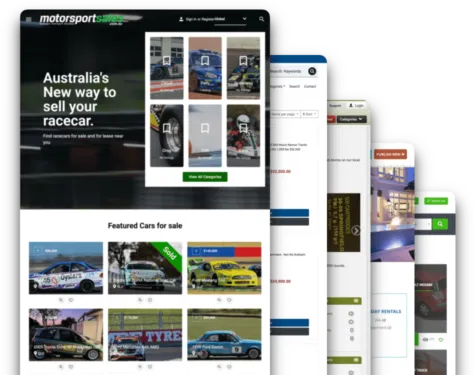Global e-commerce is reshaping the way businesses operate around the world. The increasing demand for cross-border transactions highlights the need for robust, innovative marketplace solutions!
Managing currency exchange, logistics, and compliance can be challenging for marketplace owners seeking to expand globally.
This exponential growth underscores the necessity for a cohesive strategy when overseeing global operations.
Cross-border commerce has become synonymous with sustainable business growth, offering businesses a competitive edge.
By venturing into global markets, sellers can diversify their revenue streams, create lasting customer relationships, and consolidate brand recognition worldwide.

Yet, this journey is far from simple.
Beyond standard complexities like currency fluctuations and logistical headaches, marketplace owners must consider cultural sensitivities, legal compliance, and strategic marketing tailored to local tastes.
This guide will explore how to manage cross-border transactions effectively, ensuring your marketplace remains profitable and innovative.
Table of Contents
- Understanding Cross-Border Marketplace Challenges
- Key Elements in Managing Global Transactions
- Overcoming Common Obstacles
- Innovative Strategies For Global Marketplace Expansion
- Real-Life Marketplace Success Stories
- Conclusion And Call-To-Action
Understanding Cross-Border Marketplace Challenges
Cross-border transactions open opportunities for higher revenue streams and brand expansion, but they also bring unique complexities.

Marketplace owners must deal with multiple currencies, international shipping regulations, taxation requirements, and cultural differences.
Entering a new region without adequate market research can result in legal fines, customer dissatisfaction, and logistical chaos.
- Currency Fluctuations: Constantly shifting exchange rates can undermine profitability and create confusion for both buyers and sellers.
- International Shipping & Logistics: Lengthy transit times, customs fees, local delivery hurdles, and unpredictable duty taxes often hamper user experience.
- Regulatory Compliance: Different countries have varied consumer protection laws, GDPR/CCPA compliance requirements, and data handling regulations.
- Cultural and Linguistic Differences: A one-size-fits-all approach can alienate local consumers who expect localized content and payment methods.
Additionally, increasing data transparency is crucial to build customer trust across diverse markets.

Ensuring reliability and authenticity becomes paramount when your user base spans multiple regions and cultures, especially if you want to maintain loyalty in the face of stiff competition.
These challenges can seem daunting but are not insurmountable.
Many marketplaces have successfully navigated these complexities through a blend of technology, local partnerships, and user-centric strategies.
Understanding these hurdles is the first step toward building a sustainable cross-border presence.
“Prioritize a localized approach and thoroughly research each new market before launching your cross-border strategy.”
Key Elements In Managing Global Transactions
Effective management of global transactions goes beyond currency conversion and smooth shipping processes.

It encompasses the entire user experience—from product listings and localized promotions to post-purchase support and returns.
-
Localized Payment Options
- Provide various payment gateways, including credit cards, e-wallets, and bank transfers.
- Implement value-added services that enhance the payment process, such as installment plans or loyalty rewards.
- Offer multiple currencies at checkout, allowing buyers to view prices in their home currency to reduce cart abandonment.
-
Transparent Fulfillment And Delivery
- Partner with logistics providers specializing in cross-border shipping to streamline customs clearance.
- Harness sustainability partnerships to reduce carbon footprints and improve brand image.
- Provide real-time tracking updates, so customers know exactly when to expect their packages.
-
Cultural Adaptation
- Tailor product listings, currencies, and promotions to local customs and holidays.
- Employ geo-targeted ads to speak directly to customer preferences based on region.
- Translate interfaces and marketing materials into local languages to avoid misunderstandings or mistranslations.
-
Robust Compliance Measures
- Abide by each country’s tax, consumer protection, and financial regulations to avoid fines.
- Embrace data privacy controls to remain trustworthy and reduce legal risks.
- Register with relevant authorities for taxation, licensing, or certification to demonstrate credibility.

| Factor | Importance | Example |
|---|---|---|
| Localized Payments | Enhances user trust and boosts conversion rates | Credit cards, e-wallets, local methods |
| Shipping Strategy | Improves customer satisfaction and retention | Cross-border logistics partners |
| Compliance | Prevents fines and upholds brand reputation | Tax laws, GDPR, consumer protection |
| Cultural Fit | Increases market penetration and brand affinity | Local language, targeted promotions |
Focusing on these elements will help build the foundation of a successful cross-border marketplace.
When users feel understood and protected, they are more likely to return and recommend your platform to others.
“Use technology to automatically apply region-specific pricing, tax rules, and shipping rates to create a seamless user experience.”
Overcoming Common Obstacles in Global Trade
Even with robust planning, pitfalls can emerge.

Common issues like fraud, payment disputes, and high operational costs can derail even the most promising international expansion if not tackled head-on.
- Fraud And Payment Disputes: Cross-border transactions can be susceptible to fraudulent activities.
- High Operational Costs: International shipping, taxes, and overheads can reduce profit margins if not carefully monitored.
- Lack Of Trust: Customers may hesitate to purchase from foreign marketplaces without verified user profiles or social proof.
Challenges & Solutions
- Challenge: Payment gateway rejections and chargebacks.
- Solution: Integrate fraud detection tools and offer secure payment systems to minimize disputes.
- Challenge: Balancing shipping costs with competitive pricing.
- Solution: Negotiate rates with international couriers, consider local warehousing, and track real-time shipping costs.
- Challenge: Ensuring platform safety from malicious users.
- Solution: Deploy spam prevention strategies to filter suspicious activities, verify seller credentials, and provide transparent communication channels.

Data or Statistics: According to eMarketer, global e-commerce sales surpassed $5 trillion in 2022, with cross-border transactions accounting for over 20% of that total.[1]
This underscores the magnitude of international trade and the necessity to address these obstacles effectively.
Moreover, a 2023 study by Statista indicated that 55% of online shoppers have purchased from overseas retailers at least once, emphasizing the global consumer appetite for cross-border options.[2]
| Challenge | Potential Solution |
|---|---|
| Fraud & Payment Disputes | Fraud detection tools, secure payment integrations |
| High Operational Costs | Negotiated shipping rates, local warehousing |
| Customer Trust Issues | Verified profiles, localized content, review systems |
Combating these hurdles also involves building a strong brand reputation.
Invest in thorough customer support, transparent policies, and continuous innovation in user experience.
“Maintain meticulous bookkeeping and track every cost associated with your cross-border operations to identify potential areas for optimization.”
Innovative Strategies For Global Marketplace Expansion
To stay ahead in a crowded global environment, marketplaces must deploy advanced tactics.

Simply offering products globally is no longer enough—platforms need to refine user experiences, optimize monetization strategies, and integrate cutting-edge technologies.
-
Subscription-Based Marketplaces
- Offer tiered membership models that cater to varied user needs.
- Embrace subscription-based marketplaces to ensure recurring revenue.
- Consider specialized plans for professional sellers who want additional tools like analytics, premium listings, or VIP support.
-
Paid Advertising And Sponsored Listings
- Incorporate paid advertising solutions that give sellers the option to promote their listings.
- Explore sponsored listings as an additional revenue stream, offering premium visibility in search results or category pages.
- Use advanced analytics to target specific demographics, ensuring higher ROI for advertisers and a better user experience for buyers.
-
Premium Seller Memberships
- Launch premium seller memberships with perks like priority customer support, boosted visibility, and exclusive analytics.
- Offer specialized training or marketing resources, differentiating your platform’s membership packages from competitors.
-
Niche & Community-Building Approach
- Develop a profitable niche marketplace that resonates with a specialized audience seeking unique products or services.
- Integrate social commerce capabilities for higher engagement and authenticity, enabling users to share products on social networks instantly.
- Encourage user-generated content—like reviews, testimonials, and social media shout-outs—to bolster community trust.
-
Local Community-Centric Model
- Focus on local communities to establish trust and tailor services to regional needs.
- Transform your site into a connected community, offering more than just product listings—think forums, social features, and local news.
-
Leveraging Modern Classified Marketplace Trends
- Adopt a modern classified marketplace mindset by integrating mobile-first design, AI-driven search, and advanced payment options.
- Regularly update your platform with new tech features like chatbots, virtual try-ons, or real-time shipping calculators to stay relevant.

Predict Innovations And Evolving Strategies:
- Integration Of AI-Driven Tools: Automated translations, personalized product recommendations, and advanced fraud detection can drastically improve efficiency.
- Green Delivery Solutions: As environmental awareness grows, expect more emphasis on eco-friendly packaging and shipping methods that reduce carbon footprints.
- Global Compliance Hubs: Tools that simplify multi-regional compliance, especially for registering with tax and consumer protection agencies.
“Stay updated on evolving consumer behavior and emerging technologies to remain competitive in the global marketplace.”
Real-Life Marketplace Success Stories
Seeing how global marketplaces overcame cross-border hurdles can be highly instructive. Below are three real-world examples demonstrating the power of localized adaptation, technological innovation, and strategic partnerships.
Case Study 1: Etsy[3]
Etsy successfully expanded beyond the U.S. by focusing on local communities and offering localized currency options. They adapted product listings to multiple languages and boosted user trust with verified user profiles, forging a strong global reputation. This approach led to a dramatic increase in both international traffic and overall sales, helping them become a household name in the handmade and vintage goods sector.
Case Study 2: Airbnb[4]
Airbnb used a winning subscription model for hosts and leveraged cultural adaptation to triumph in diverse markets worldwide. Their user-friendly interface features localized language support and transparent pricing, which propelled brand acceptance across continents. Additionally, Airbnb’s adoption of local payment methods in emerging markets proved instrumental for driving growth in areas where credit cards are less prevalent.
Case Study 3: OLX[5]
OLX expanded swiftly into emerging markets by focusing on geo-targeted ads, tapping local behaviors for better engagement. They also invested heavily in modern classified marketplace trends like mobile-first interfaces and secure payment channels to remain ahead of the competition. By understanding local consumer preferences—such as cash on delivery options and local language support—OLX established itself as a leading marketplace in multiple regions.
| Marketplace | Key Success Factor | Outcome |
|---|---|---|
| Etsy | Local currency, verified profiles | Built global trust |
| Airbnb | Local language support, subscription models | Enhanced user experience & brand loyalty |
| OLX | Mobile-first, geo-targeted ads | Rapid expansion in emerging economies |
“Research how industry leaders adapted their platforms to conquer new regions, and apply similar best practices to your marketplace model.”
Conclusion And Call-To-Action
Managing cross-border transactions in marketplaces requires a holistic approach involving currency exchange, logistics, regulatory compliance, and cultural understanding.

From mastering monetization strategies to embracing local nuances, the potential for global growth is enormous.
By combining robust technology, thoughtful marketing, and localized operations, marketplace owners can tap into a global audience that is increasingly ready to purchase from international sellers.
Looking to create an online marketplace? Contact us at Yclas.
“Begin your cross-border strategy with pilot programs in select regions, gather insights, and then refine before a full-scale launch.”
Related Articles
- Building Trust In The Digital Age
- Value-Added Services For Growth
- Greening Your Marketplace
- Mastering Geo-Targeted Ads
- Monetizing Success With Ads
- Verified User Profiles Matter
- Enhanced Data Privacy Controls
- Premium Seller Memberships
- Sponsored Listings Power
- Guard Your Marketplace
- Profitable Niche Marketplace
- Boost Engagement With Social Commerce
- Local Communities Approach
- Subscription-Based Marketplaces
- A Winning Subscription Model
- Secure & Compliant GDPR/CCPA
- More Than Listings
- Modern Classified Marketplace Trends
- Mastering Monetization Steps
Yclas Resources
Sources
- eMarketer: Global E-commerce Forecast
- Statista: Cross-Border E-commerce Data
- Etsy Press: Etsy Newsroom
- Airbnb Newsroom: Airbnb Global Expansion
- OLX Stats: OLX Global
Frequently Asked Questions (FAQs)
What Is The First Step To Launching A Cross-Border Marketplace?
- Research your target market thoroughly, including local regulations, cultural nuances, and consumer behaviors. This lays the groundwork for crafting a localized strategy that improves user trust and meets legal requirements.
How Can I Overcome Currency Fluctuations In International Transactions?
- Use multi-currency payment gateways and regularly monitor exchange rates to adjust prices when necessary. By offering transparent pricing and automated conversion tools, you build shopper confidence and reduce confusion during checkout.
Which Payment Methods Should Be Offered To Global Buyers?
- Provide multiple gateways such as credit cards, e-wallets, and localized payment methods tailored to each country’s preferences. This diversity ensures a smooth user experience and helps reduce cart abandonment.
Why Are Verified User Profiles Important In Cross-Border Marketplaces?
- Verified profiles foster trust by assuring buyers that sellers are genuine and vice versa. It decreases the likelihood of fraud and chargebacks while boosting confidence in the marketplace’s safety.
How Do I Handle Logistics And International Shipping Costs?
- Partner with established cross-border logistics providers to streamline customs and import/export processes. Negotiating volume-based shipping rates and local warehousing options can also minimize delivery times and reduce overhead.
Are There Any Specific Regulations I Need To Be Aware Of?
- Yes, international marketplaces must comply with a variety of global laws and regulations, including tax laws, consumer protections, and data privacy mandates like GDPR/CCPA. Staying compliant protects your business from fines and builds long-term customer trust.
How Does Cultural Adaptation Improve My Marketplace’s Performance?
- Adapting product listings, promotions, and user interfaces to each region’s customs and language creates a personalized shopping experience. Customers feel more at ease and are more likely to return when they see content and offers tailored to their cultural expectations.
What Role Does Technology Play In Scaling My Cross-Border Marketplace?
- Technology automates critical tasks such as tax calculations, currency conversions, and fraud detection, helping you manage a broader user base efficiently. Advanced tools like AI-driven translations and product recommendations can also enhance user engagement and global reach.
How Do Subscription Models Help Marketplaces Expand Internationally?
- Offering subscription tiers and value-added services generates recurring income and attracts repeat customers. Sellers appreciate premium tools or extra support, and buyers benefit from specialized features like exclusive deals and improved user experiences.
Can I Build A Sense Of Community Within A Global Marketplace?
- Yes, fostering community can be done through localized forums, social commerce features, and user-generated content like reviews. This approach increases trust and loyalty, as buyers and sellers engage in discussions and share experiences, strengthening your marketplace’s reputation.

